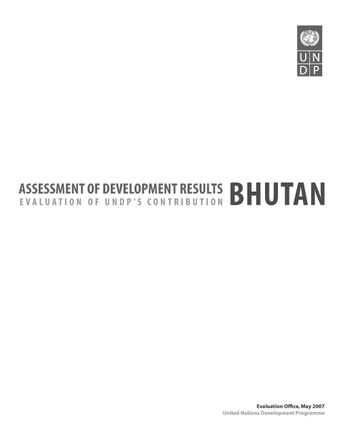Introduction

- Author: United Nations Development Programme
- Main Title: Assessment of Development Results - Bhutan , pp 8-12
- Publication Date: December 2007
- DOI: https://doi.org/10.18356/cf858b88-en
- Language: English
Bhutan is a small country of 672,425 people. It is located in South Asia at the foot of the Himalayas and is landlocked between two of the world’s most populous nations: India and China. With a per capita gross national income of USD 1,005 in 2005—40 percent higher than India and more than 70 percent higher than the average income of low income countries—Bhutan has recorded impressive gains in human development after ending its selfimposed isolation in 1961. Life expectancy at birth has increased from 42 years during 1970-1975 to 66 years in 2004, and the infant mortality rate has been more than halved from 156 deaths per 1,000 live births in 1970 to 40 deaths per 1,000 live births in 2005. The country’s human development index (HDI) has grown steadily from 0.325 in 1984 to 0.583 in 2003, placing Bhutan in the category of medium human development countries. Policymaking and programming in Bhutan are uniquely guided by the concept of gross national happiness (GNH), which emphasizes sustainable and equitable socioeconomic development, conservation of environment, preservation and promotion of culture and promotion of good governance.
-
From This Site
/content/books/9789210599672c004dcterms_title,dcterms_subject,pub_keyword-contentType:Journal -contentType:Contributor -contentType:Concept -contentType:Institution105



